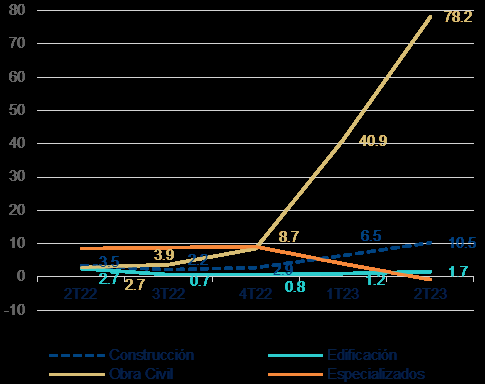Published on Tuesday, December 19, 2023 | Updated on Wednesday, January 24, 2024
Newsletter Juliána
Summary
newsletter que se envía semanalmente asdfg asdfgasdfgasdfgasdfgasdfg asdfgasdfgasdfgasdfg asdfgasdfgasdfgasdfgasdfg asdfgasdfg
Key points
- Key points:
- aaa
- bbb
- ccc
Gráfico 0.00
<< Título del gráfico >>
<< Subtítulo del gráfico >>

Fuente
Emissions: Fossil CO2 emissions are at a record high in 2023.(2) Global fossil fuel emissions are projected to rise by 1.1% in 2023, reaching a new record high. Emission intensity has steadily declined but not sufficiently to offset economic growth (Figure 1). Emissions are declining in some economies (26 countries representing 28% of global emissions), but these efforts are insufficient to reverse the overall trend. If current emission levels persist, there is a 50% chance global warming will consistently exceed the 1.5°C goal in about 7 years, according to the Global Carbon Budget’s estimates.
Figure 1.
Global CO2 Emissions and Intensity
Climate Policies: Overall national-level climate action slowed in 2022.(3) As of September 2023, 105 countries pledged net-zero targets, but only 26 and the EU legally enshrined them. Net-zero goals cover 83% of global emissions, yet they are not binding for most. IPCC estimates indicate a 43% global GHG reduction by 2030 is necessary to meet the 1.5°C target. However, OECD countries committed to only a 28% reduction, requiring a 30% increase to bridge the ambition gap.
In 2022, the number of national adopted climate policies saw a mere 1% growth, slowing from a 10% average between 2000 and 2021 (Figure 2). While policy coverage and stringency don't always indicate effectiveness, the 2022 slowdown poses risks to implementation. Divergence in climate action is evident, with 22 OECD countries and 8 partner countries intensifying efforts, driven by net-zero pledges and regulatory measures. Geopolitical and economic shocks led to backtracking, delaying climate actions while fossil fuel support reached USD 1 trillion.
|
Figure 2. Number of Adopted Climate Policies |
||
|
|
||
|
Data covers all OECD and OECD partner countries except the United States. Source: OECD (2023), Climate Actions and Policies Measurement Framework (CAPMF) |
||
Climate action disparities highlight the need for international coordination. The expansion of market-based instruments lagged, emphasizing a decreasing role in policy mixes. The path to net-zero demands ambitious targets, inclusive policies, and addressing social and economic impacts.(4)
The Global Stocktake, the basis for COP28 discussions. The first Global Stocktake (GST) serves as a 5-yearly checkpoint, assessing collective progress towards Paris Climate Agreement goals, focusing in three areas: mitigation, adaptation and means of implementation - i.e. how to finance climate action-. The technical report,(5) published in September, stated that it is crucial to act urgently and has served as a basis for discussion of concrete measures to close these gaps at COP28, including progress towards more ambitious Nationally Determined Contributions (NDCs). Still, challenges persist in closing the ambition and the implementation gap (Figure 3 and Box 1).
|
Figure 3. GHG Emissions, historical and projected based on NDC and reduction required to meet temperature targets |
||
|
|
||
|
Source: Technical dialogue of the first global stocktake United Nations, September 2023. |
||
Anotación inferior
Geographies
- Geography Tags
- Europe
Topics
- Topic Tags
- Energy and Commodities
